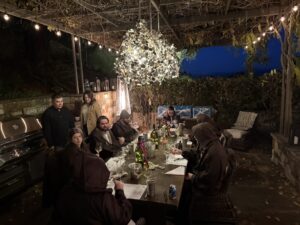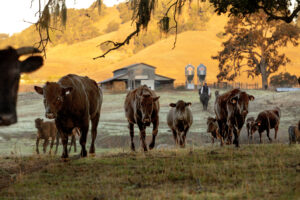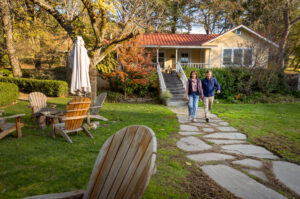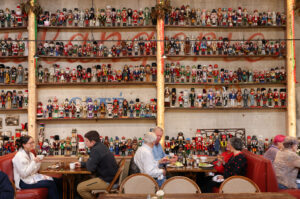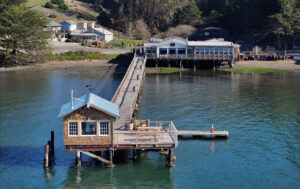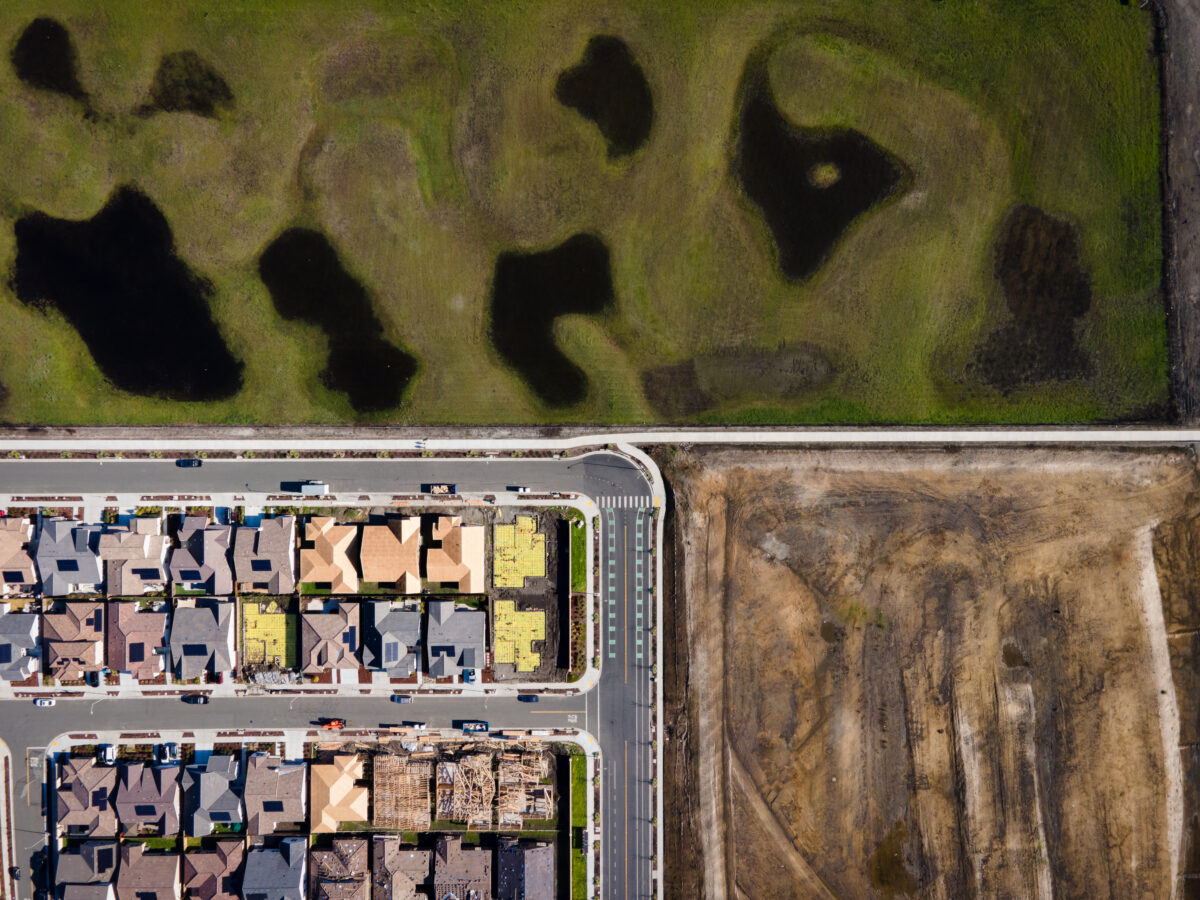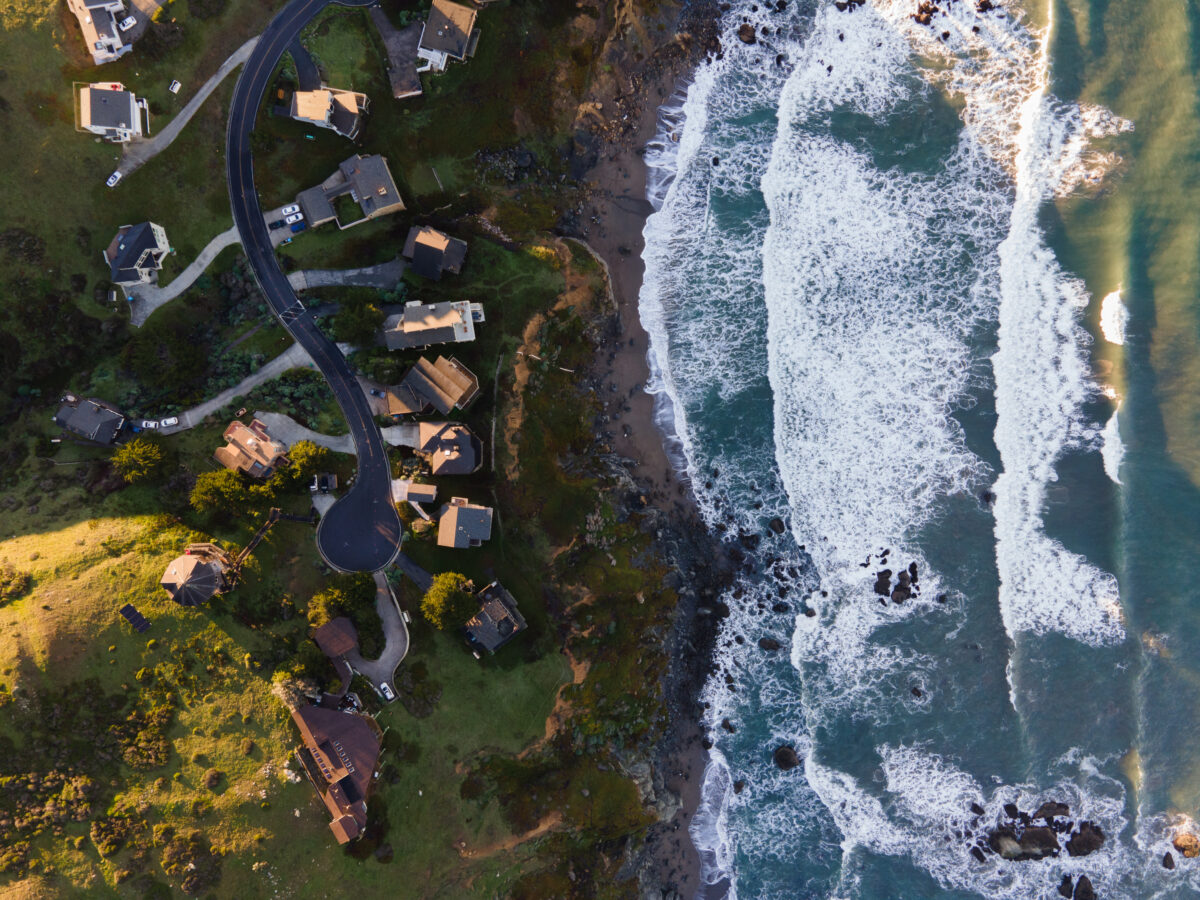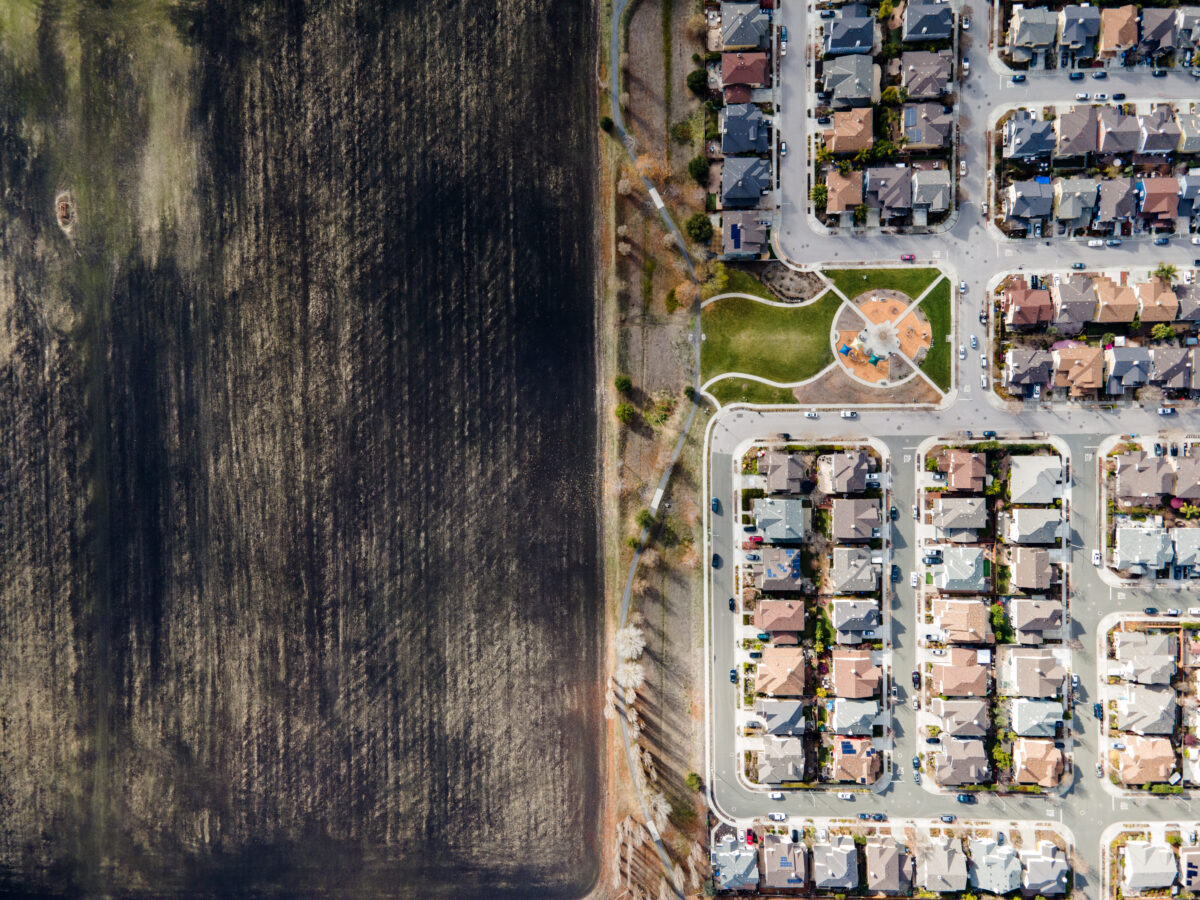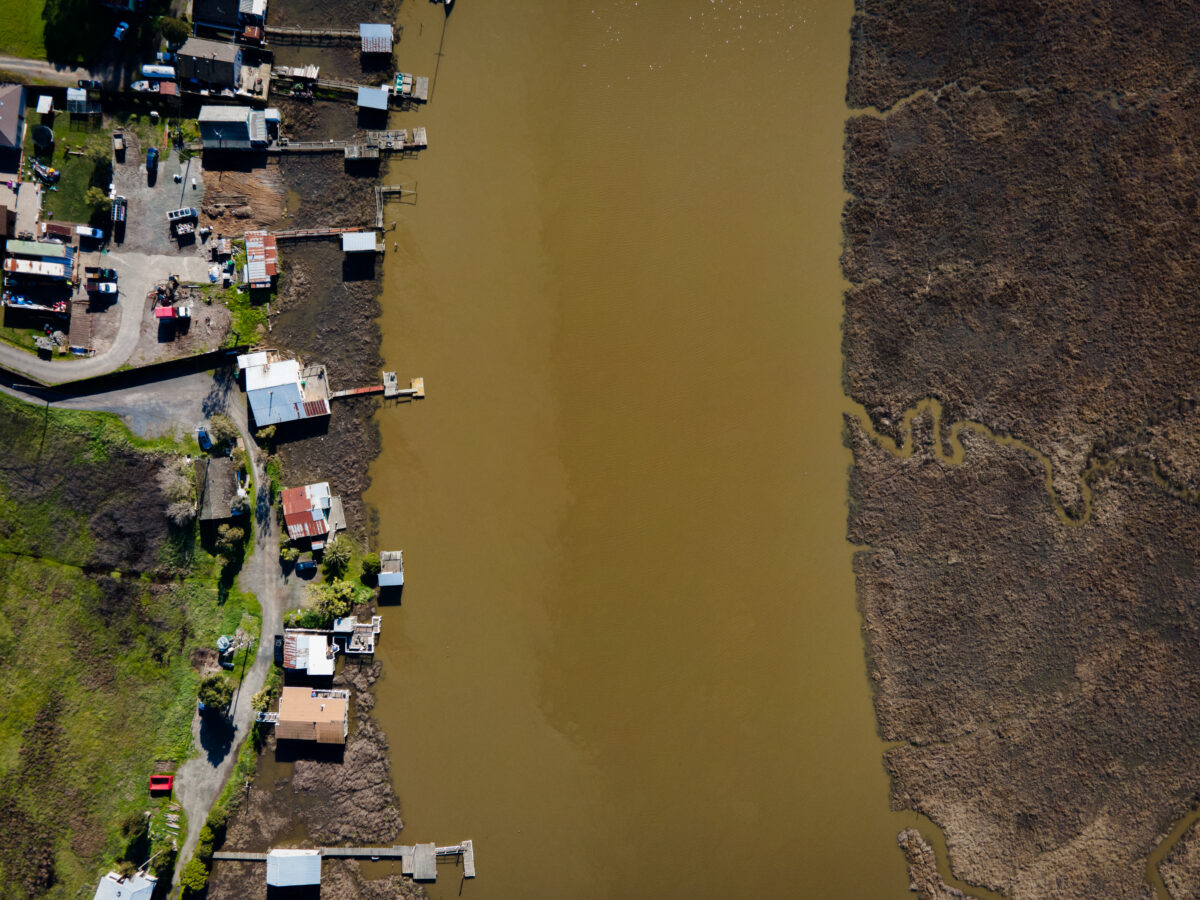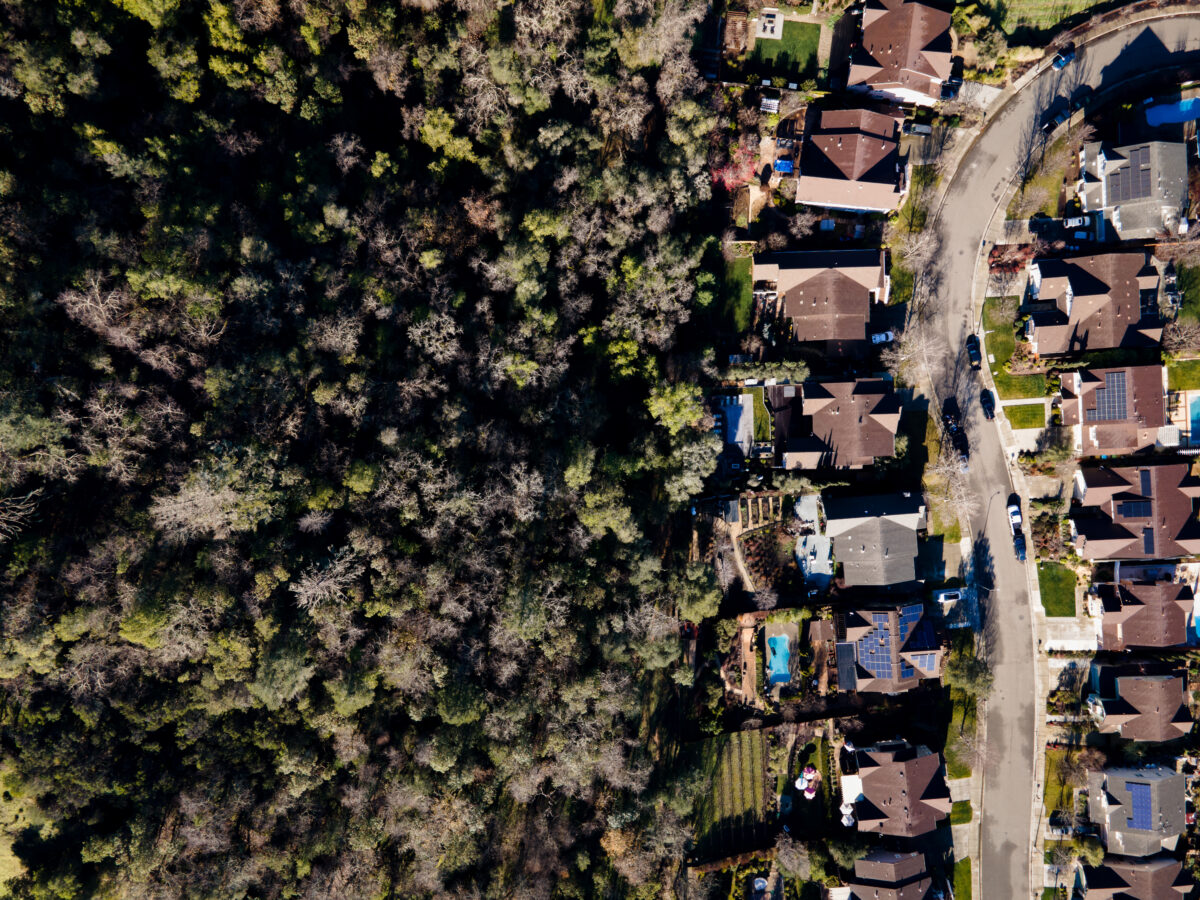It was all open space once, a land untamed and unpastured. Animal trails leading to water and Kashia Pomo footpaths eventually gave way to dirt roads worn down by settlers from as far away as Spain and Russia. Later paved over, the byways were replaced by overpasses and interstates.
From an eagle’s view, it might have appeared the land was being carved apart.
As more people arrived in Sonoma County, the lines of demarcation between built and unbuilt spaces spread in a maze of patterns, as farms, subdivisions, parks, downtowns, forests, rivers, gravel mines, and warehouses, all butted up against one another.
Today, the idea of “living on the edge” is less metaphor than reality. From above, these borders appear like seams in a patchwork quilt of human impressions on the land. In southwest Sonoma, a flower pattern is sewn against a solid patch of green, coming to life in a mobile-home park arranged like daisies, each single unit a petal around a pistil-shaped court, a bouquet beside an open meadow.
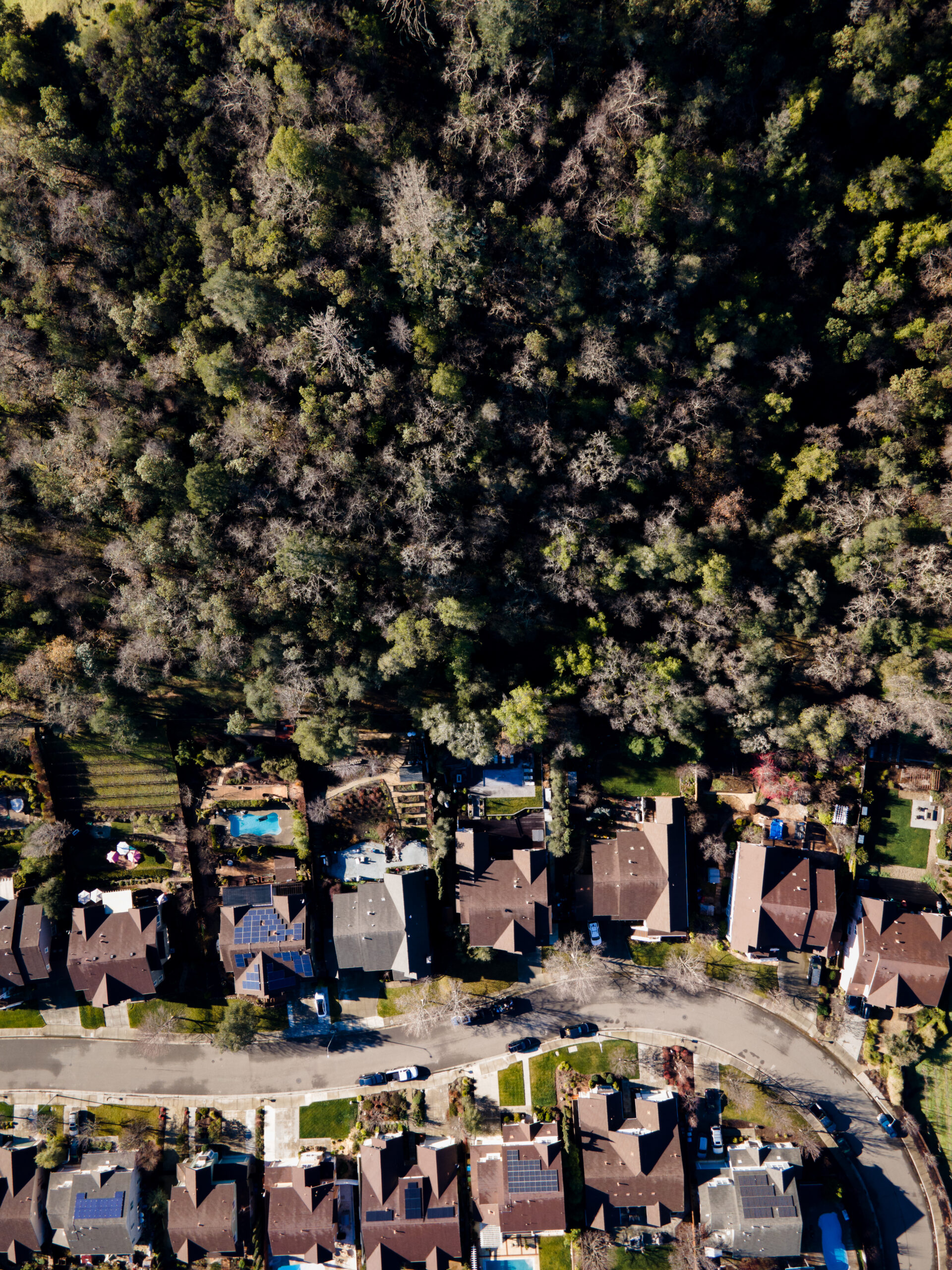
A fallow field next to an east Petaluma neighborhood lies charred black. Hay farmers live side by side with soccer moms, down the road from a water treatment plant and a hospital. On the eastern edge of Rohnert Park, new development stamps order upon a sea of wild green grass painted with wisps of seasonal pools. And along the coast, Dillon Beach houses perch at the edge of a cliff — as close to the Pacific as you will see in any enclave from San Diego to Vancouver.
These endless boundaries bind together urban, suburban, and rural landscapes, not unlike the lines that artists Christo and Jeanne-Claude played with in their “Running Fence” back in 1976. At night, they occupy the same liminal space evoked by Bruce Springsteen on the album “Darkness on the Edge of Town.” In the daylight, they become ribbons of unending possibility, like those a child might imagine while listening to Shel Silverstein’s “Where the Sidewalk Ends” for the first time.
Looking down from above, it makes you wonder what Sonoma County looked like 500 years ago or 100 years ago or even 10 years ago. Open space hardly means what it once did, before the fires. Then again, there were always fires. And it was all open space once.


